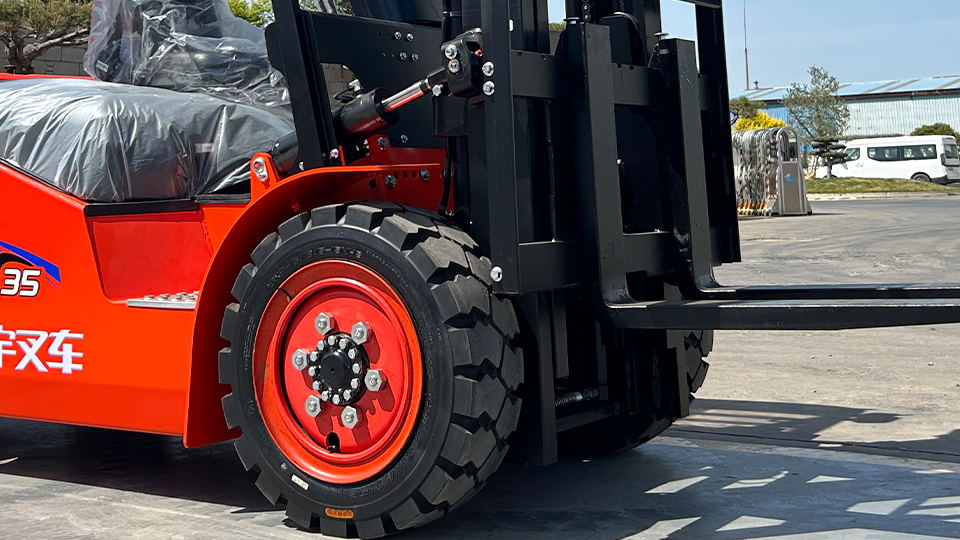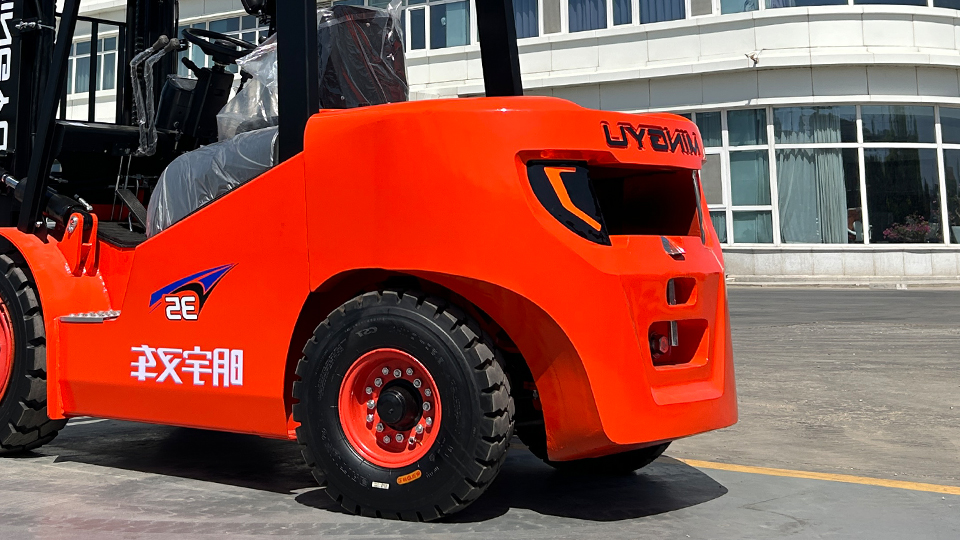
The seemingly simple act of removing forklift forks is a fundamental skill for anyone involved in forklift maintenance, inspection, or the installation of attachments. While the process itself is relatively straightforward, adhering to strict safety protocols and understanding the nuances of different fork mounting systems is paramount. Improper removal can lead to serious injury, damage to the forks or carriage, and operational downtime.
This comprehensive technical article will delve deep into the methodologies and safety considerations involved in removing forklift forks. We will explore the common types of fork mounting systems, provide step-by-step instructions for their safe removal, and highlight crucial safety precautions that must be observed throughout the process. Whether you're a seasoned technician or a new operator, this guide will equip you with the knowledge to perform this task safely and efficiently.
Why Remove Forklift Forks?
There are several reasons why removing forklift forks might be necessary:
Inspection and Maintenance: Regular inspection of the forks for wear, cracks, bends, or other damage is crucial for safety. Removal allows for a thorough examination of all surfaces, including the underside and heel. Similarly, maintenance tasks like cleaning, painting, or repairing minor damage may necessitate fork removal.
Attachment Installation: Many forklift attachments, such as side shifters, fork positioners, or clamps, require the removal of the standard forks for proper installation.
Fork Replacement: If forks are found to be damaged beyond repair or no longer meet safety standards, they must be replaced. Removal is the first step in this process.
Adjusting Fork Spacing (on some carriages): While not a complete removal, some carriages allow for adjusting fork spacing by temporarily detaching and repositioning the forks.
Transportation or Storage: In certain situations, removing the forks might be necessary for easier transportation or more efficient storage of the forklift.
Understanding Fork Mounting Systems

Before attempting to remove any forks, it's essential to identify the type of mounting system used on your forklift. The two most common types are:
Hook-Type (Pin-Type) Mounting: This is the most prevalent system. The forks have hooks or lugs on their upper rear surface that engage with matching slots or hangers on the carriage. A retaining pin or locking mechanism, typically located at the bottom rear of the fork, secures it to the carriage.
Shaft-Mounted Forks: In this less common system, the forks slide onto a horizontal shaft or bar that runs across the width of the carriage. They are usually secured by collars, set screws, or other locking devices on the shaft.
Identifying the mounting type is the first crucial step in determining the correct removal procedure. Consult your forklift's operator manual if you are unsure.
Safety First: Essential Precautions Before Removal
Safety must be the absolute priority when removing forklift forks. Neglecting these precautions can lead to severe injuries.
Park on a Level Surface: Ensure the forklift is parked on a firm, level, and stable surface. Engage the parking brake firmly.
Lower the Forks Completely: Fully lower the forks to the ground or as low as they will go. This minimizes the potential energy stored in the mast and hydraulic system.
Turn Off the Forklift: Completely shut off the forklift's engine or power source. For electric forklifts, disconnect the battery. Ensure the key is removed to prevent accidental operation.
Wear Appropriate Personal Protective Equipment (PPE): Always wear safety glasses, sturdy work gloves, and steel-toed boots. The forks are heavy and can cause significant injury if dropped or mishandled.
Ensure Adequate Workspace: Provide yourself with ample clear workspace around the forklift to maneuver safely. Remove any obstructions.
Use Appropriate Lifting Equipment (If Necessary): Depending on the size and weight of the forks, you may need assistance or the use of a suitable lifting device (e.g., a chain block, hoist, or another forklift with proper lifting attachments) to safely handle them. Never attempt to lift excessively heavy forks manually.
Inspect the Forks and Carriage: Before removal, visually inspect the forks and carriage for any obvious damage, loose pins, or obstructions.
Consult the Operator's Manual: Always refer to the specific instructions and safety guidelines provided in your forklift's operator manual. It may contain model-specific procedures or warnings.
Communicate: If you are working with another person, clearly communicate each step of the process to ensure everyone is aware of the actions being taken.
Step-by-Step Guide: Removing Hook-Type (Pin-Type) Forks
This is the most common method. Follow these steps carefully:
Locate the Retaining Pin or Locking Mechanism: This is usually found at the bottom rear of each fork, where it connects to the carriage. It might be a simple pin with a cotter pin or clip, a spring-loaded pin, a latch, or a similar locking device.
Remove the Retaining Pin or Disengage the Locking Mechanism: Carefully remove the cotter pin or clip (if present) and then slide out the retaining pin. For other locking mechanisms, follow the specific instructions for disengagement. Keep the removed pins and clips in a safe place to avoid losing them.
Slightly Raise the Forks (If Necessary): In some cases, slightly raising the forks a few inches may relieve any binding pressure and make them easier to slide off the carriage. Ensure the forks remain stable.
Slide the Fork Sideways: Once the retaining pin is removed, carefully slide the fork sideways off the carriage hangers. This usually requires a firm but controlled effort. Be prepared for the weight of the fork as it disengages.

Support the Fork: As the fork slides off, ensure it is adequately supported to prevent it from falling and causing injury or damage. If the fork is heavy, have a second person assist you or use lifting equipment.
Repeat for the Other Fork: Follow the same procedure for removing the remaining fork.
Inspect the Carriage: Once the forks are removed, take the opportunity to inspect the carriage hangers for any wear, damage, or debris.
Step-by-Step Guide: Removing Shaft-Mounted Forks
This method requires a slightly different approach:
Locate the Locking Devices: Identify the collars, set screws, or other mechanisms that secure the forks to the carriage shaft. These are typically located on the inner side of each fork, near the point where it meets the shaft.
Loosen or Remove the Locking Devices: Use the appropriate tools (e.g., Allen wrench, socket wrench) to loosen or remove the set screws or other locking devices. Do not remove them completely unless necessary, and keep them organized to avoid loss.
Slide the Fork Off the Shaft: Once the locking devices are loosened or removed, carefully slide the fork sideways off the carriage shaft. Be prepared for the weight of the fork.
Support the Fork: Ensure the fork is adequately supported as it slides off the shaft. Use assistance or lifting equipment for heavier forks.
Repeat for the Other Fork: Follow the same procedure for the remaining fork.
Inspect the Shaft: After removing the forks, inspect the carriage shaft for any damage or wear.
Handling and Storing Removed Forks
Once the forks are safely removed, proper handling and storage are essential:
Handle with Care: Always lift and move forks using proper lifting techniques. Avoid sudden movements or dropping them.
Store Securely: Store the forks on a stable surface where they cannot fall, roll, or cause a tripping hazard. Ideally, use a designated fork storage rack or blocks to keep them secure and organized.
Protect from Damage: Store forks in a location where they are protected from impact, corrosion, and other potential damage.
Reinstalling Forklift Forks
Reinstalling the forks is essentially the reverse of the removal process. However, the same emphasis on safety and proper procedure applies. Ensure the forks are correctly aligned with the carriage and that the retaining pins or locking mechanisms are securely in place. Double-check that the forks are properly seated and cannot move unintentionally.
Potential Challenges and Troubleshooting
You might encounter some challenges during fork removal:
Stuck or Corroded Pins: If the retaining pins are stuck due to rust or debris, use a penetrating lubricant and gently tap them with a soft-faced hammer. Avoid excessive force that could damage the pin or carriage.
Bent or Damaged Forks or Carriage: If you notice any significant bending or damage, do not attempt to remove or reinstall the forks. Contact a qualified forklift technician for inspection and repair.
Unfamiliar Locking Mechanisms: If you encounter a locking mechanism you are unfamiliar with, consult the forklift's operator manual before attempting to disengage it.
Heavy Forks: Always use appropriate lifting assistance for heavy forks. Do not risk personal injury by attempting to lift them manually if they exceed your safe lifting capacity.
Conclusion: Mastering Fork Removal for Safety and Efficiency
Removing forklift forks is a task that requires a blend of mechanical understanding, adherence to safety protocols, and careful execution. By correctly identifying the fork mounting system, following the step-by-step procedures outlined in this guide, and prioritizing safety at every stage, you can perform this task efficiently and without incident. Remember that the operator's manual is your primary resource for model-specific instructions and warnings. When in doubt, always consult a qualified forklift technician. Mastering the art of safe fork removal is a crucial contribution to a safe and productive material handling operation.
Name: selena
Mobile:+86-13176910558
Tel:+86-0535-2090977
Whatsapp:8613181602336
Email:vip@mingyuforklift.com
Add:Xiaqiu Town, Laizhou, Yantai City, Shandong Province, China